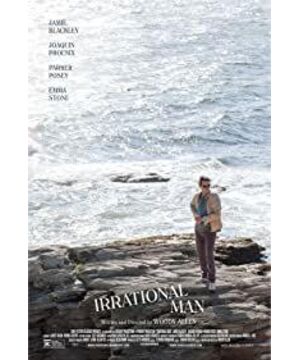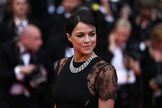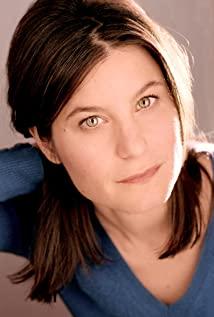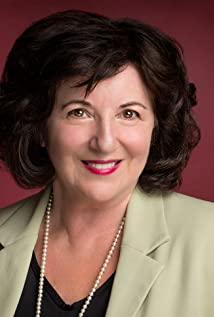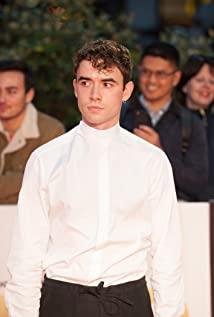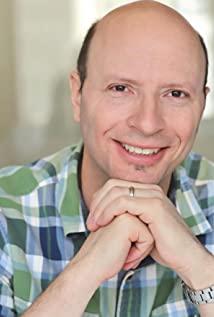It is 12:37 now, and I set myself 20 minutes to finish writing this. Teacher Tiecheng said that the first three pictures of the movie are the most important. The first three pictures of this film can be a set of shots, shooting the Irrational from the front, the subjective shot, and the side. man, combined with the title, is the undisputed protagonist. He drove a car on the road, and his expression was more casual, which more reflected his attitude towards life at that time. It can also be officially called decadence. In the third shot, the male narration comes in, which is where the film confuses me. First, the narration time should be done after the whole thing is over. The last sentence evokes memories and brings out the part of the heroine. But the ending is known to everyone, so the narration appears a bit nonsensical, maybe it should be the title of the film, so that everything is unreasonable. Second, the male and female narrations are interspersed. At the beginning, the male narration was brought into the plot. After that, the inner activities of the male protagonist were also completed by self-reporting; the narrative of the female protagonist started from the subjective evaluation of the male protagonist, and gradually joined the inner activities. narration until the end of the film. The feeling of double narration is a bit confusing, who is the first person? Is there a first-person transition in the film? In fact, this is very similar to the narrative style of a novel. When I was a child, I read a love novel "1/2 of the Heart" by Zeng Wei. It is also the theme of this kind of hero and heroine interspersed as the first person, but the novel is easier to find the dividing nodes than the movie. Personally, I feel that the narratives of the male and female protagonists are mixed, forming a contrast, which can reflect the cognitive bias of the self and others on the object "I". Flashlight is the word that appears most frequently in short reviews, which confirms its appearance, a practical choice. is an element in a movie that has attributes. Practical pun, but other than that, it's harder to dig out something new. Maybe this is also because I have a shallow experience and can't see the essence of the narrative expressed in the film and what it can reflect. There are two scenes at the beginning of the film. I think from the point of view of editing, there are still rules to follow, which are more elegant. The first scene is the first scene of the heroine. Her narration briefly introduces some of the situation of Abey, and then the scene of the hero mentions some kind of reputation. The next series of scenes, students ABCD... From many In the population, it creates the first image of the male protagonist for the audience, and highlights a certain reputation. To a certain extent, the confused audience narrows the speculation and prediction of the plot to "love", which is one of the reasons why the heroine plays more roles as a key character. It was not until the 40 minutes of the film that it entered the focus of the film, and there was less than 50 minutes left for its narration. "Love" disguises "murder", confuses the audience, and creates an unexpected and reasonable turning point. The second scene is a scene between the hero and heroine before they officially meet for the first time. play. The editing of this scene is in accordance with "class → canteen → class → dialogue between the male lead and the second female lead → class → the male and female lead meet", such a series of short scene clips clearly explain the relationship between the characters and the environment they are in. Clever narration. I am very envious of being able to introduce to the audience a film narration technique with a complex background in just one or two sentences. In "Old Pao'er", I have some insight that Feng Xiaogang's use of language dialogue is too good. Here is the emotion of the camera language, and the editing method is simply beautiful. Both methods, as a beginner, are very fond of. Next, I still want to talk about three shots. The first shot is the heel shot of the male protagonist turning around and leaving after changing the orange juice. In his anxious, nervous, restless, and excited heart, except through the red eyes and rough gasps, it is the use of shaking the camera. Because the tone of the whole film is disguised as small and fresh, and the American style is small and clear, if you don't understand the plot, you will think it is an ordinary pure love movie. It's like "beating the heart", "leap year" and the like. So, most of the shots are very stable. But in order to reflect the complex inner drama of the protagonist, this shot uses a shaking lens. Shaking the camera, used throughout the recent Bourneau 5, can leave viewers dizzy when not used properly. If you use it well, you can intuitively feel the change of the protagonist's mood like this one, but in the overall tone, it is still rather abrupt. Whether the use of this lens has a deeper meaning, I dare not interpret it too much, but within the scope of interpretation, my understanding seems to be on the edge of the correct solution. The second shot is about 45 minutes of the film, the heroine's posture when talking with her terrific little boyfriend. This shot is head-up, and I want to express the relationship between the two more objectively. At this moment, the relationship between the two has been torn apart by Abey, but they still haven't made it clear on the table. The sitting postures and movements of the two people reflect the attitude of alienation and opposition between the two people. The direction of Erlang's legs, the position of the heroine's elbow, and the brief freeze after the conversation between the two men. The third shot is a group of shots distributed in the film. That is, the picture of the classroom where the heroine goes to take piano lessons. The heroine walked into the piano teacher's house twice. The first time was when she found this place for the first time. The second and last time, the hero had murderous intentions towards her and deliberately carried out a killing in the place. when. The picture of the heroine playing the piano seriously in class has appeared three times in total, and the expression is exactly the same every time. The first time was the picture of himself going to the piano classroom for the first time before cheating with the male protagonist; the second time was that after cheating with the male protagonist, the male protagonist intervened in the piano screen as a bystander; the third time It is when the heroine is "waiting to be murdered" after the hero's intentional murder. Since the set, the heroine's expression and other elements are exactly the same, I had doubts whether the first two shots were the same shot and an extension of this shot. Later, the murders shattered that idea. The narrative throughout the film is very clean. The heroine plays the piano with a serious face, without any hint of any subsequent developments (perhaps it is really just for objective narrative), but the final killing place appears repeatedly. to the highlight effect. Finally, about the theme and content of the film. I've read another film review that talked about the American middle class, I'm not familiar with it, so I can't understand it in this regard. First of all, looking at the character setting, I understand that it is a middle-aged man (with a high degree of education, high IQ and rich experience) to act as a heroic dream of saving the world. Obviously, his heroic dream did not happen overnight, but relying on the pen to influence him can no longer satisfy him, and it cannot exert real influence. In addition, why does he lose his sexual ability and lose hope for life when he has no sense of existence in the plot? The reason for losing his life is all because his friend died and his wife ran away with someone else... This background information is useless to me. What I think is that it was a trivial opportunity, and the real reason was his heroic dream that he had nowhere to put. And in the eavesdropping, he regained the quick way to realize the heroic dream, killing people and killing evil. BTW, most men think about being a savior. But this setting collapsed when he deliberately killed the heroine. His sense of satisfaction and fulfillment in killing people's harm was slowly overwhelmed by the pleasure of killing in human nature. Some crazy and irrational expressions of pleasure can also be understood as interpreting the psychological activities of a murderer after killing the first one. They yearn to hide, but they can't hide their joy, they are born to kill gods. That's how serial killers appear. Before he started killing the heroine, what I wanted to think about was whether this murder was a redemption of human nature or an abuse of human nature. The end result is nothing but abuse. In addition, the heroine cheated very hard, "I haven't prepared myself wholeheartedly, I am not exclusive to him." During a stable romantic relationship, calmly cheating with a professor, and calmly showing off with her boyfriend, is such a bearish relationship between the two sexes an existing and recognized gender culture in the United States? Abuse of sexual relations is to foil the American people's pursuit of the essence of soul The sanctity of mate? This kind of information of American gender culture is conveyed consciously or unconsciously through the film. What we can most easily see is the part that contradicts our own culture, a process of absorbing, borrowing and discarding. At the end, a few paragraphs are excerpted: "I am under your spell", confessing my text, although the heroine empathizes with the professor after saying this. . "people just manufacture drama, so they can get through their lives because they are so empty." "He is very conservative in a kind of liberal way" "in order to really see the world, we must break with our familiar acceptance of it " BTY I think the main point of the heroine's existence is to confuse the audience, to provide narration, and the complete blackening of the professor at the end, but I don't feel the meaning of her own. Also, this is a film based on a philosophical background. Existentialists, romantics, extremists throughout the article, I tried to label, and finally found that, indeed, everyone is diverse, in different situations, we are differentists, and there is nothing to stick to in principle. In the end, I wrote for a whole hour, overestimating myself and breaking my promise.
View more about Irrational Man reviews


